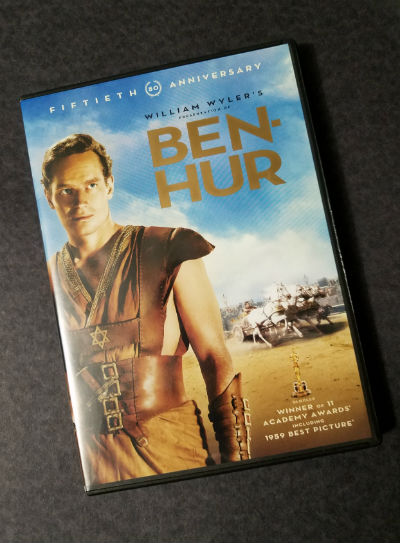 In 1959 a great classic movie entitled Ben-Hur came out. It was based upon an 1880 novel by General Lew Wallace, called Ben Hur, A Tale of the Christ. According to Wikipedia, General Wallace was an attorney from Indiana, who was also a Union general and a governor of the New Mexico territory. It says that this novel has been recognized as “the most influential Christian book of the nineteenth century.” There was a silent version of the movie in 1925. The 1959 version of the movie stars the iconic Charlton Heston as Judah Ben-Hur. Wikipedia states that the movie won 11 Academy Awards—a record.
In 1959 a great classic movie entitled Ben-Hur came out. It was based upon an 1880 novel by General Lew Wallace, called Ben Hur, A Tale of the Christ. According to Wikipedia, General Wallace was an attorney from Indiana, who was also a Union general and a governor of the New Mexico territory. It says that this novel has been recognized as “the most influential Christian book of the nineteenth century.” There was a silent version of the movie in 1925. The 1959 version of the movie stars the iconic Charlton Heston as Judah Ben-Hur. Wikipedia states that the movie won 11 Academy Awards—a record.
The awards included Best Picture, Best Director, Best Actor in a Leading Role, Best Actor in a Supporting Role, and Best Cinematography-Color. Also, the American Film Institute gave it the honor of being called the second best American Epic Film.
I discovered online that there was a dispute about a supposed controversial subtext in the story. Having watched the movie, I feel the idea is very far-fetched. Although another version came out in 2016, from the clips I viewed, I don’t think it could even be compared to the 1959 version. The 2016 version has been called a “new interpretation” of the novel.
The actor portraying Jesus in the 1959 Ben-Hur has only a few limited appearances, and viewers never actually see his face clearly. In the one scene where there is a whole front view of “Jesus,” it is from a distance, with a shadow cast over his face. Yet the impact of Jesus is the core of the entire movie. The script begins with Mary and Joseph arriving in Bethlehem before the birth of Jesus. Later leaders discuss this new Jewish leader who says that “God is in every man.” I don’t believe that Jesus ever said that “God is in every man.” (This is the only problematic wording I noticed in the entire script. According to the Bible, we are all made in God’s image. However, God isn’t “in” every person—only those who receive Him by faith.) The powerful impact of Christ’s influence and His death on the cross are strongly portrayed in the film. Besides being a story of the impact of Christ, this movie is also a story of the pomp and barbarism of Roman rule, the corruption of character that the desire for power causes, the pain of betrayal by a friend, the devastation of anger and vengeance, the power of love, and the life-changing power of forgiveness.
In my opinion, this motion picture is one that everyone should see. It is a spectacular, spellbinding drama that reminds us of why Jesus came in to the world. Although there is no bad language or inappropriate sexual content, it isn’t really a movie for children. Common Sense Media recommends it for ages 13 and up. It lasts about 3-1/2 hours, but I believe it’s worth the time. Its length makes it a perfect movie for the long evening of New Years Eve. My DVD includes an intermission and segments of the music theme at the beginning and at intermission. Online information says that Part I is 2 hours and and 7 minutes and Part II is 1 hour and 15 minutes. (You will probably want to be sure any children under age 9 are not seeing Part II. It has a rather gory part relating to the chariot race.) If you haven’t seen this movie, I hope you will change that. If it’s been a while since you’ve seen it, maybe it’s time to watch it again. Below is a trailer to give you a taste of the movie.
Videos suggested at the end of this video are not necessarily endorsed by this website





Leave A Comment